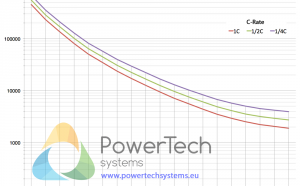 |
Welcome To Evlithium Best Store For Lithium Iron Phosphate (LiFePO4) Battery |
 |
| Technology | Pros / Cons | Application field |
Visual Radar (courtesy of BCG Research) |
|---|---|---|---|
| Lithium-Cobalt-Oxyde (LCO) |
|
|

|
|
Lithium Iron Phosphate (LFP or LiFePo4) |
|
|
 |
| Lithium Manganese Oxyde (LMO) |
|
|
 |
| Lithium Nickel Mangan¨¨se Cobalt (NMC) |
|
|
 |
PowerTech Systems uses different types of lithium-ion cells according to requested specifications.
We mainly use Lithium Iron Phosphate, LMO and NMC technologies to design our packs. Lithium Cobalt Oxide Technology (LCO) is excluded from our products because of the unsatisfactory level of safety and limited lifespan.
We select the cells from the most reputable global cell manufacturers to ensure greater reliability of our products. The cells are sorted and balanced to ensure optimal lifespan of delivered products.
Appeared in 1996, Lithium Ferro Phosphate technology (also called LFP or LiFePo4) is supplanting other technologies because of its technical advantages. This technology is implanted in traction applications, but also in energy storage applications such as self-efficiency, Off-Grid or UPS systems.
Major advantages of Lithium Iron Phosphate:
Lithium Iron Phosphate technology is that which allows the greatest number of charge / discharge cycles. That is why this technology is mainly adopted in stationary energy storage systems (self-consumption, Off-Grid, UPS, etc.) for applications requiring long life.
The actual number of cycles that can be performed depends on several factors:
Below chart shows the estimated number of cycles for Lithium Iron Phosphate battery cells (LFP, LiFePo4) according to the discharge power and DOD figures. The test conditions are those of a laboratory (constant temperature of 25 ¡ã C, constant charging power and discharge).

It should be noted that following the number of completed cycle, the batteries still have a nominal capacity > 80% of the original capacity.